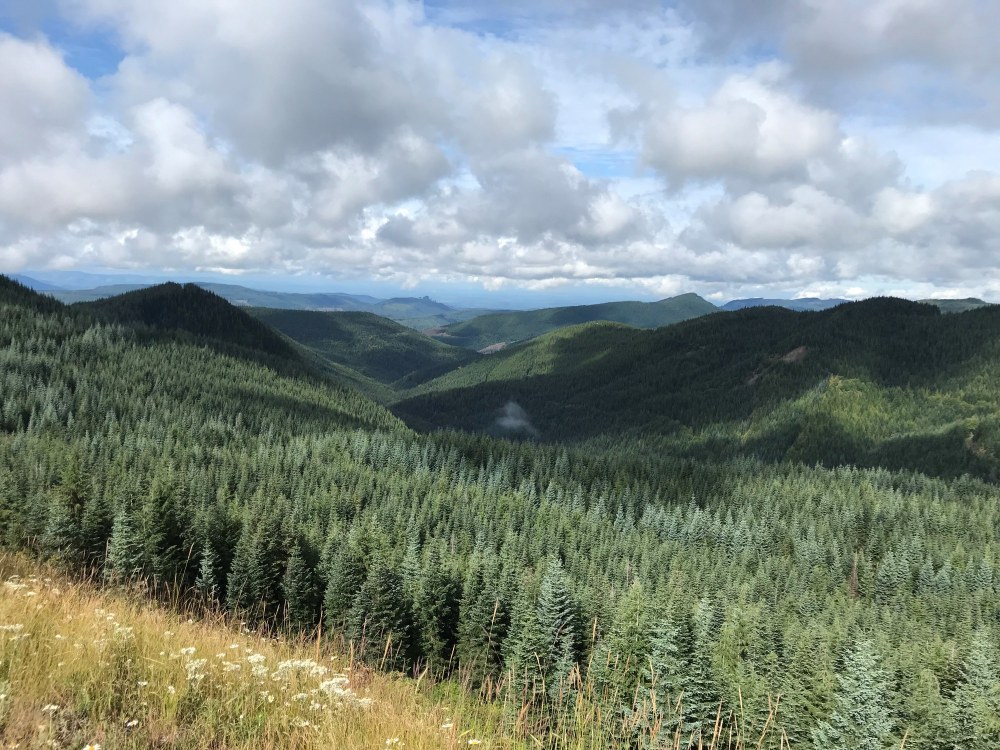
The Mountaineers made a commitment to reduce our organization’s carbon footprint as part of Vision 2022. In the Carbon Footprint Reduction Committee’s last blog post, we wrote about electric vehicles and some things to think about if you’re considering purchasing one. In this blog, we introduce you to carbon offsets.
Have you ever wondered how much carbon dioxide (CO2) you emit when you head into the mountains? One gallon of gasoline will produce nearly 20 pounds of CO2. So the easiest way to answer this question is to divide the number of roundtrip miles by your vehicle’s average miles per gallon (MPG), then multiply by 20.
For example, my old Honda CRV is getting about 22 MPG these days, so I emit just over 200 pounds of CO2 on a 226 mile round trip from my house to Paradise Lodge at Mount Rainier. How many pounds of CO2 do you emit when you drive to your favorite climb, your go-to hike?
What are Carbon Offsets?
A carbon offset is essentially any activity that compensates for the emission of carbon dioxide by providing for an emission reduction elsewhere. The emission reduction is commonly done through the planting or preservation of trees which soak up CO2, but there are also other ways to remove CO2 or prevent it from entering the atmosphere in the first place. Many programs exist to help offset your carbon footprint, from local non-profits like Forterra (used by Mountaineers Books), national programs like Terrapass, and even through other mountaineering clubs.
Offsetting your carbon footprint can be a productive way to help reduce your overall footprint, but there are things to consider. First of all, it’s good to think about using carbon offsets in addition to existing efforts to reduce your carbon footprint, not as a quick fix for everything. Over the past year we’ve outlined a number of ways this can be done through your diet, transportation, and home.
Another thing to consider is that there are drawbacks to carbon offsets. For example, if you’re participating in a program that plants trees to remove carbon from the atmosphere, it’s important to remember that it takes a long time for a tree to grow. If we want to stop global warming, more immediate action (and results) is needed.
All that said, carbon offsets have their place and there may be reasons you want to invest in them. Perhaps a new electric or more fuel efficient vehicle just isn’t in the cards for the foreseeable future. Maybe your work or family life requires a fair amount of air travel to stay connected. Or if you’re like me, perhaps you can’t help but see the connection between the shrinking glaciers you traversed and the rattling tailpipe of your vehicle idling in the trailhead parking lot. Putting some money towards offsets that actively reduce the amount of carbon in the atmosphere is one way to compensate for those activities where you can’t practically change your behavior or technology.
Questions to Ask
If you’re thinking about investing in a carbon offset program, here are a few questions to ask yourself:
- What is the time frame over which the emission offset occurs? Shorter is better.
- Is the offset really going to make a meaningful difference? Some programs have “protected” forests that weren’t in much danger of being logged to begin with.
- Is the entity included in the American Carbon Registry or otherwise accredited?
- Is your tree planting likely to go up in smoke from wildfires?
- Do you have any connection with the program or place?
- Would you prefer that your offset is done locally so you can see the results for yourself?
While offsets have their limits, they provide an arrow in a quiver of options to reduce atmospheric carbon.
Resources
If you’re interested in offsetting your next trip to the mountains or the sea, here are some resources to check out:
- Forterra’s Evergreen Carbon Capture program: Local conservation non-profit Forterra helps individuals and companies offset their carbon emissions through their Evergreen Carbon Capture program. Their website helps you calculate your annual carbon footprint and plant trees locally to balance your carbon impact. Trees are planted as part of Forterra’s comprehensive habitat restoration efforts.
- Terrapass: Terrapass provides several carbon offset options, from a monthly carbon offset subscription to offsetting your air travel or even your wedding. Offsets purchased through Terrapass supports several different types of carbon offset projects, including farm power, landfill gas capture, wind power, and abandoned coal mine methane capture.
- Clear: Similar to Terrapass, Clear offers a carbon offset program that supports a number of projects such as reforestation and cookstove initiatives around the world. They have an excellent calculator that helps determine the exact carbon footprint of your commute, outdoor trips, air travel, and home.
It’s one of the Carbon Footprint Reduction Committee’s goals to offer further ways for Mountaineers members to offset your carbon footprint. Stay tuned!
 Nate Brown
Nate Brown